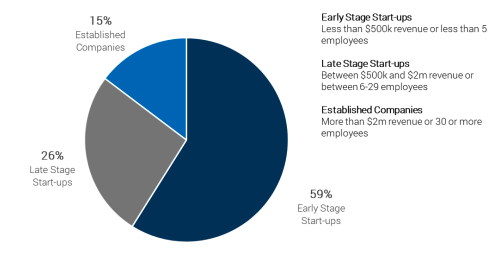The 2020 Australia K-12 EdTech Whitepaper

What it takes to be successful in K-12 EdTech
The 2020 Australian K-12 EdTech Whitepaper
Greenwich Capital Partners & EduGrowth
November 2020
The Australian K-12 education sector trails behind other sectors in the adoption of digital resources. We believe this is about to change. But like the e-commerce companies of the dotcom era, not all of today’s EdTech companies will be winners.
There are a number of factors that have contributed to the state of K-12 EdTech in Australia being more transformative than ever before. As a result of the COVID-19 pandemic, K-12 education has been pushed into adopting new digital technologies in order to support remote learning. 240 EdTech companies target K-12 schools, which is approximately 40% of Australia’s EdTech sector. There’s a new generation of parents and students who have a digital-first mindset and expect education to be delivered in methods that are seamless and personalised.
Figure 2. Digital expenditure as a proportion of overall expenditure on global education and training, including the expected uplift from the COVID-19 pandemic (source: HolonIQ)
The aim was to survey the current landscape of the Australian K-12 EdTech sector, in order to observe past, present and future trends. The questions asked when creating developing this research were:
Why is now the time to invest into the Australian K-12 EdTech sector?
How can EdTech companies win market share and create a sustainable business model during times of rapid growth?
The following are key recommendations for EdTech companies:
- EdTech companies need to focus on building a differentiated product that encompasses data privacy, learning analytics, and implementation support.
- To break through the challenges with selling to schools, it is crucial to have a sophisticated sales and marketing model that uses sales technology, dedicated sales professionals, and teachers as advisers.
- To expand the addressable market, EdTech companies need to be deliberate about which international markets to enter and how to compete.
- Consider a consolidation play in the sector: a roll-up company will improve sales productivity, guard against external threats, take advantage of big opportunities, and compete for the best talent.
- With more companies and the emergence of Big Tech in the classroom, understand your value proposition and product position in a competitive landscape.
The highlights for investors considering K-12 EdTech investment are:
- K-12 schools are adapting their curriculums, because relevant technology proficiency will enable a future-ready workforce and meet the evolving expectations of parents and students.
- COVID-10 accelerated pre-existing education sector trends, such as the adoption of technology in schools, the rollout of infrastructure to enable that technology, and the growth of the B2C model.
- These factors suggest that EdTech access is moving from early-adopters to the mass market. The global EdTech market is estimated to grow 12.2% over the next five years, reaching $404 billion in total expenditure.
- Australia is well-positioned to take advantage of this growth because of its rigorous use of evidence-driven strategies and stable government funding.
Gain a full scope of the Australian K-12 EdTech sector and download the whitepaper today.
This was developed in partnership with Greenwich Capital Partners. Thank you to all survey participants who sent in their responses to inform this research.
Register to download report
Note: this page will refresh on submit to reveal the download link





